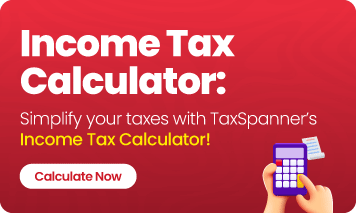Maximize Tax Benefits: A Guide to Set-Off and Carry Forward of Losses
Profits and losses are inevitable in business and investments, but the Indian Income Tax Law provides provisions to minimize tax liability even in case of losses. Understanding the set-off and carry forward of losses can help taxpayers optimize their tax benefits. Knowing how to apply short-term capital loss set off and long-term capital loss carry forward can significantly impact financial planning. Let’s explore how taxpayers can utilize these provisions to their advantage with the help of TaxSpanner.
Understanding Set-Off of Losses
The concept of set-off refers to adjusting losses against income from various sources within the same financial year. The tax law allows two types of set-offs:
Intra-Head Set-Off
Losses from one source of income are set off against profits from another source within the same head. For instance:
- Business loss from one venture can be adjusted against profit from another business.
- Short-term capital loss set off is possible against both short-term capital gains and long-term capital gains.
Exceptions to Intra-Head Set-Off:
- Long-term capital losses can only be set off against long-term capital gains.
- Speculative business losses can only be set off against speculative business income.
- Losses from owning and maintaining horse races can only be adjusted against income from the same source.
Inter-Head Set-Off
If losses remain after intra-head adjustments, they can be set off against income from other heads within the same year. For example:
- Loss from house property can be set off against salary income.
- However, capital losses, speculative losses, and losses from specified businesses cannot be set off against other income heads.
Understanding Carry Forward of Losses
If losses cannot be fully adjusted in the same year, they can be carried forward to future assessment years, subject to specific rules. This helps in reducing tax liability in future years when profits are earned. TaxSpanner helps individuals and businesses make the most of these provisions.
Rules for Carrying Forward Losses
Losses from House Property
Can be carried forward for 8 years and set off only against house property income.
Non-Speculative Business Losses
Can be carried forward for 8 years and adjusted only against business income.
Speculative Business Losses
Can be carried forward for 4 years and adjusted only against speculative income.
Specified Business Losses (35AD)
No time limit for carry forward but can only be set off against specified business income.
Capital Losses
Short-term capital loss set off is possible against both short-term and long-term capital gains whereas Long-term capital loss carry forward is possible for 8 years but can only be adjusted against long-term capital gains.
Losses from Horse Racing
Can be carried forward for 4 years and set off only against income from horse racing.
Below is a summary of different types of losses and their respective carry-forward provisions:
| Section | Losses can be carried forward | Set off against Income from | Time limitation for carry forward |
|---|---|---|---|
| 71B | Loss from house property | House property | 8 years |
| 72 | Business and profession | Business and profession | 8 years |
| 73 | Loss from speculative business | Speculative business | 4 years |
| 73A | Loss from specified business | Specified business | No time limit |
| 74 | Short term capital loss | Short term capital gain and long term capital gain | 8 years |
| 74 | Long term capital loss | Long term capital gain | 8 years |
| 74A | Loss from owning and maintaining horse races | Owning and maintaining horse races | 4 years |
Maximizing Tax Benefits with ITR filing
To avail the benefits of set-off and carry forward of losses, taxpayers must make sure timely filing of their Income Tax Return (ITR). The due date for ITR filing is typically July 31st of the assessment year. Failing to file the return before the deadline results in losing the ability to carry forward certain losses.
Impact of the New Tax Regime
With the new tax regime becoming the default from FY 2023-24, taxpayers should carefully evaluate their options. Under the new tax regime:
- Capital losses (short-term and long-term) can still be set off and carried forward.
- House property losses cannot be set off against other income and cannot be carried forward.
- If an ITR is filed after the due date, it will be considered under the new tax regime, affecting loss carry-forward benefits.
Why Choose TaxSpanner?
Navigating the complexities of short-term capital loss set off, set-off and carry forward of losses, and long-term capital loss carry forward can be challenging. TaxSpanner provides expert guidance to help taxpayers:
- Optimize tax savings by utilizing set-off and carry forward provisions.
- Guaranteed timely ITR filing to preserve loss carry-forward benefits.
- Compare tax regimes to make informed financial decisions.
With TaxSpanner, you can stay compliant while maximizing your tax efficiency. Don’t let losses go to waste, use them strategically to reduce your future tax liability.
In conclusion, understanding set-off and carry forward of losses is crucial for tax planning. Whether dealing with short-term capital loss set off or long-term capital loss carry forward, taxpayers must file their ITR on time to leverage these provisions. With TaxSpanner, you can seamlessly navigate tax laws and maximize your tax benefits.
Explore TaxSpanner's wide range of calculators for your tax planning and calculations!
View Tools & Calculators





